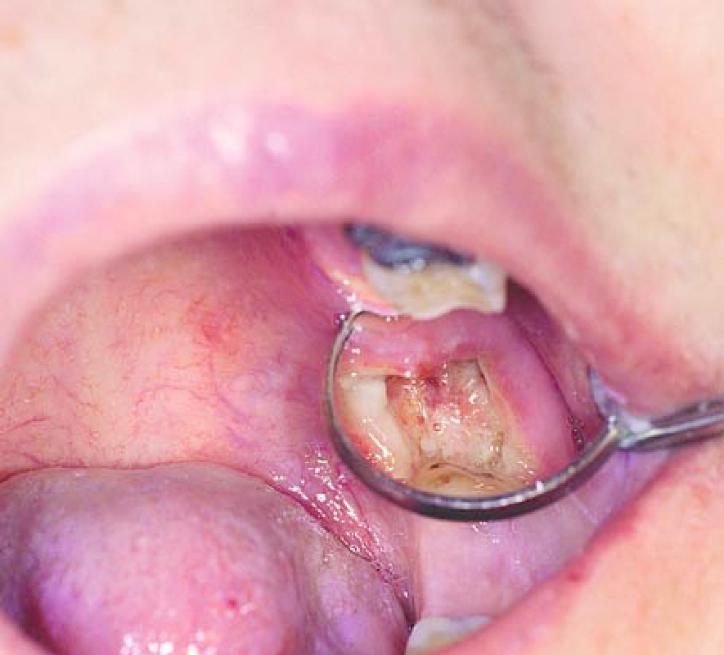Prevention & Management of Dry Socket
Dry Socket, also known as dento-alveolar osteitis, alveolar osteitis, alveolitis, focal osteomyelitis without suppuration, alveolalgia, alveolitis sicca dolorosa and alveolar periostitis, is a well-recognised complication of tooth extraction.
It is characterised by increasingly severe pain in and around the extraction site usually starting on the 2 – 4 post-operative day and can last for 10 – 40 days.
The pain radiates typically to the ear. The normal post-extraction blood clot is absent from the tooth socket; the bony walls of the socket are bare and exquisitely sensitive to even gentle probing. Bad breath and an unpleasant taste in the mouth are invariably present.
The condition probably arises as a result of a complex interaction between surgical trauma, local bacterial infection and various systemic factors.
The incidence rate probably lies somewhere between 3 – 20% of all extractions with lower pre molar and molar sockets most commonly involved.
Risk Factors
- Extraction of ‘wisdom teeth’ especially impacted lower ‘wisdom’ teeth
- Traumatic & difficult extractions
- Oral / depot contraception
- Immunosuppressant drugs such as steroids, cyclosporine & methotrexate
- Active / recent history of Acute Ulcerative Gingivitis (‘Trench Mouth’) or Pericoronitis (infection / inflammation around the crown of a tooth) associated with the tooth to be extracted
- Smoking (> 20 cigarettes per day)
- Increased bone density either locally or generally (eg. Paget’s Disease & Osteopetrosis)
- Previous history of ‘dry sockets’ following extractions.

Preventive Measures for the Patient
Wherever possible pre-operative oral hygiene measures to reduce plaque levels to a minimum should be instituted, such as using an antiseptic mouthwash.
Patients who smoke should stop before the tooth extraction and for at least 2 post-extraction whilst the socket(s) heals.
Patients should avoid vigorous mouth rinsing for the first 24 hours post-extraction and to use gentle tooth brushing and mouth rinses for 7 days post-extraction.
Patients should return to the Oral Surgeon / Dentist immediately they develop increasing pain from the extraction socket, awful taste in the mouth or bad breath.
Dry Socket Treatment
The infected socket is gently irrigated with an antiseptic mouthwash.
The socket is packed with a dressing that contains sedative and antiseptic ingredients. The dressing prevents the accumulation of food debris in the extraction socket, protects the exposed bone from local irritation and calms down the inflammation-infection within the extraction socket walls.
Antibiotics may be prescribed or changed (if already on painkillers will still need to be taken until the effects of the sedative dressing become apparent and the infection has started to clear.
If the pain does not settle within 48 hours, then get back in contact with the Oral Surgeon / Dentist.
Useful Articles & Websites
BDJ 2006. The Prevention of ‘Dry Socket’ with Topical Metronidazole in General Dental Practice
J Oral Maxillofac Surg 2010. Clinical Concepts of Dry Socket
Evidence-Based Dentistry 2012. Does chlorhexidine prevent dry socket?
Cochrane Review 2012. Local Interventions for the Management of Alveolar Osteitis (Dry Socket)
BDJ 2014. Interventions for the Prevention of Dry Socket. An Evidence-Based Update
J Adv Med & Dent Sci Research 2014. Current Recommendations for Treatment of Dry Socket – A Review
J Pharm Sci & Res 2015. Incidence of Dry Socket after Third Molar Extraction
SADJ August 2018. Painful Dry Socket – An Alternative Perspective
